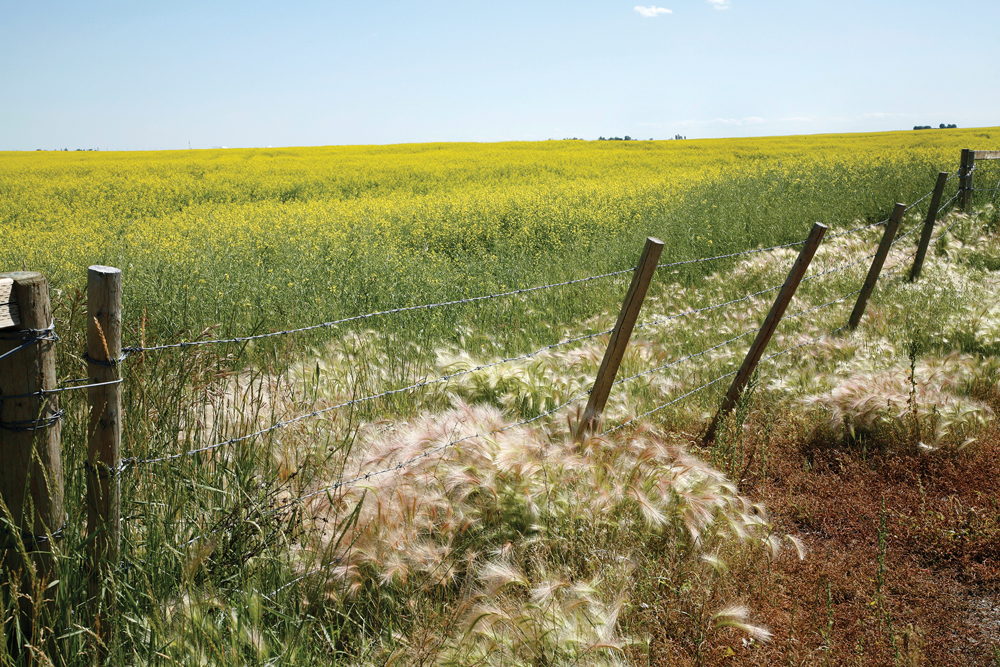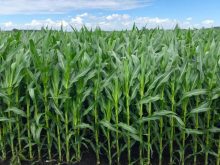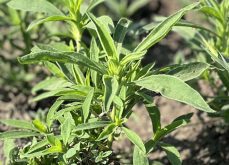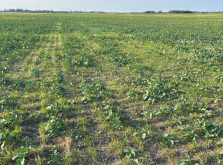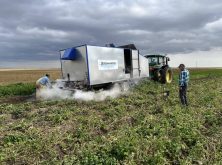As any farmer will attest to, herbicide-resistant weeds are a growing concern on the Canadian Prairies. In fact, it’s estimated they cost farmers in Western Canada as much as $530 million annually in lost yields and alternative weed management practices.
Charles Geddes, a research scientist with Agriculture and Agri-Food Canada (AAFC), who specializes in weed ecology and cropping systems, addressed the issue of herbicide resistance at Saskatchewan Agronomy Research Update 2022, held Dec. 13-14 in person and online in Saskatoon. Geddes is currently leading a series of herbicide-resistant (HR) weed surveys on the Prairies to increase awareness of HR weeds and to help growers mitigate and manage them on their farms.
Geddes said it’s important to note the difference between herbicide resistance and herbicide tolerance. Tolerance is the inherent ability of a weed species to survive and reproduce after a herbicide has been applied, while resistance is an evolutionary adaptation of the weed that confers resistance in a plant species that was initially susceptible to a herbicide.
Read Also

Claas brings 1000 Series SP forage harvesters to Canada
In mid-August, Claas unveiled its new line of Jaguar forage harvesters at an event in Visalia, California, deep in the heart of that state’s dairy region.
While herbicide resistance is a global issue, Geddes said it’s a particular challenge in this country. Canada ranks third in the world in terms of having the greatest number of unique herbicide-resistant weed biotypes, behind the United States and Australia.
A big part of the challenge when it comes to herbicide-resistant weeds is the limited number of new tools that are available to fight them, he said. When herbicides were first introduced, new modes of action were released every two or three years. Geddes pointed out that flow has slowed to a trickle, with most new herbicides that are introduced being reformulations of old modes of action.
As part of a series of weed abundance surveys Julia Leeson, an AAFC weed monitoring biologist, and her team are conducting, 2,277 fields across Saskatchewan were surveyed in 2019 and 2021. That data was then used to provide metrics such as the frequency and density with which weed species can occur in a region after post-emergence herbicide application.
The survey results showed that green foxtail, volunteer canola, wild oat, wild buckwheat, and, of course, kochia pose the biggest threats when it comes to HR weeds in Saskatchewan. One of the more surprising results in that province, according to Geddes, is that volunteer canola appears to have surpassed both wild oat and wild buckwheat for the No. 2 spot for the most abundant weed in Saskatchewan.
The herbicide resistance survey that took place in 2019-20 covered a subset of 419 fields that were included in the larger weed abundance survey. Based on the survey results, Group 1 resistance in wild oat is the biggest herbicide resistance issue Saskatchewan is facing, Geddes said.
HR wild oat was found in 77 per cent of 250 fields where wild oat was collected and tested, or 47 per cent of all fields that were surveyed. Geddes said that means roughly 47 per cent of all fields in the province (about 20.6 million acres) likely have Group 1-resistant wild oat present and that number is likely to rise by the time the next survey is conducted.
Some potential good news to come out of the survey was Group 2 resistance appeared to affect a significantly lower number of fields (30 per cent of fields where wild oat was tested or 18 per cent of all fields surveyed). While that could mean producers are managing the issue, Geddes said another explanation could be that a different pesticide product from the previous Saskatchewan survey was used in this more recent survey.
Green foxtail continues to be a persistent threat in Saskatchewan, according to the survey results. Twenty-eight per cent of the fields where it was collected showed Group 1 resistance, which represents seven per cent of fields overall, a slight increase from previous surveys. Where that biotype did occur, it tended to occupy about 63 per cent of acres in those fields.
Yellow foxtail is also beginning to make its presence known in Saskatchewan, according to Geddes. Although no Group 1-resistant yellow foxtail showed up in previous surveys, three populations of the weed were found in the most recent survey. Geddes said this wasn’t a huge surprise since all three were situated in the southeast corner of the province near the border with Manitoba, where it had been found in previous surveys of that province.
Kochia is king
Geddes said the biggest issue when it comes to HR broadleaf weeds continues to be kochia. Based on the most recent survey results, 100 per cent of the fields tested showed some level of resistance to Group 2 herbicides, which equates to an estimated 39 per cent of all fields in Saskatchewan.
He said the kochia problem has increased dramatically since it was first documented in the Prairies in 1988. In Alberta, for example, four per cent of the populations sampled in 2012 were found to be glyphosate resistant. By 2017 that number had increased to 50 per cent. The Alberta survey was repeated in 2021 and it showed 78 per cent of weed populations had some form of glyphosate resistance. That same survey also showed triple-resistant kochia (resistance to Groups 2 and 9 and at least one Group 4 herbicide) made up 45 per cent of those populations while dicamba resistance was detected in 28 per cent.
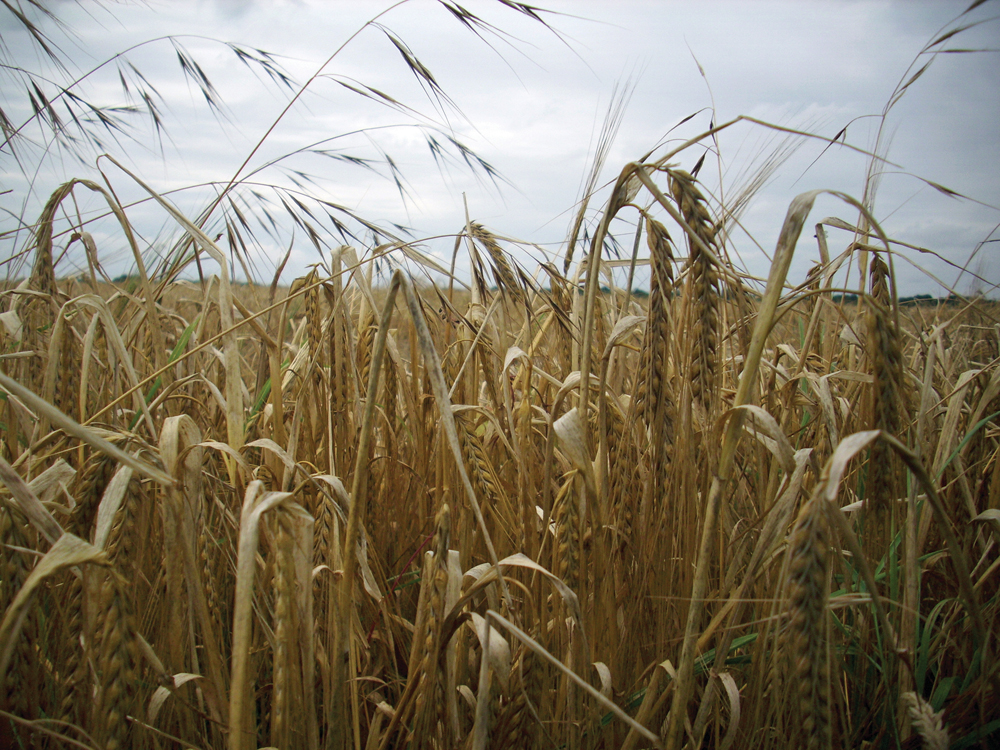
Increasing threat
Spiny annual sowthistle is another weed that is showing an increasing resistance to Group 2 in Saskatchewan. In the most recent survey, 17 per cent of the fields where sowthistle species were collected showed Group 2 resistance. Geddes said that is concerning since it didn’t show up at all in previous surveys conducted in 2014 and 2015.
Redroot pigweed is also showing an increased resistance to Group 2 herbicides in Saskatchewan. Survey results from 2019-20 showed 57 per cent of fields where redroot pigweed was collected and tested had Group 2-resistant redroot pigweed (equivalent to four per cent of all fields) compared with just 10 per cent from the previous survey.
Shephard’s purse continues to show resistance to Group 2 herbicides in the province. The 2019-20 survey showed resistance in 45 per cent of the fields tested, or three per cent of all fields surveyed.
One of the more concerning pieces of data to come out of the Saskatchewan HR survey is possible evidence of protoporphyrinogen oxidase (PPO) inhibitor-resistant kochia. PPO inhibitors are Group 14 herbicides. Geddes said more research will be required to confirm that finding but added he wouldn’t be surprised if that does end up being the case.
Two fairly recent newcomers when it comes to Group 2 herbicide-resistant weeds showing up in the Saskatchewan survey are hemp-nettle and lamb’s quarters. While Group 2 resistance was thought to have existed in hemp-nettle for some time, the 2019-20 survey results were the first time it showed up in survey samples (three of five tested fields). Group 2-resistant lamb’s quarters showed up in one field of the 78 tested. Geddes said he expects that number to grow in subsequent surveys.
Geddes explained that the HR survey results in Saskatchewan showed that, overall, 74 per cent of the fields where he and his colleagues were able to collect weeds with viable seeds had at least one herbicide-resistant weed biotype. They also showed HR weeds affect slightly more than half of the fields where they occur, and more than 15 million acres of farmland across the province are affected by herbicide resistance, equivalent to 28 million acres at the field level. As HR levels become more of an issue, the number of acres they occupy will subsequently grow, he added.
Manitoba numbers
Manitoba’s most recent HR survey was conducted in 2022, with a total of 157 fields across the province surveyed and 622 weed samples collected. Those results are expected to be released sometime later this year. While it’s too early to say what the implications of those results will be, Geddes said there is similar HR concerns in that province. Glyphosate-resistant kochia in Manitoba was registered at one per cent of fields based on survey results compiled in 2013 but had climbed to 58 per cent in 2018.
Take time to test
Geddes advises growers who are concerned about the threat HR weeds pose to their crops to send samples to a diagnostic testing facility to determine if resistant weeds are present in their fields. He said there are several different facilities to choose from in Western Canada including the Prairie Resistance Research Lab in Lethbridge, Alta., for novel herbicide resistance, the Crop Protection Lab in Regina, Sask., AgQuest in Minto, Man., and the Pest Surveillance Initiative in Winnipeg.
One relatively new tool when it comes to determining the occurrence and distribution of HR weeds is genetic testing. While provinces like Quebec and Ontario are further ahead in this regard, Geddes said efforts have begun in Western Canada to “start building our repertoire of genetic tests” for detecting herbicide resistance.
He said the advantage of genetic testing is it can be performed in a fraction of the time required for more conventional testing, that is, one to two weeks compared with four to six months required for a traditional bioassay. The upshot, he explained, is growers could implement new management practices for herbicide-resistant weeds within the same growing year rather than having to wait until the following season.
Still, Geddes said there aren’t any magical solutions for dealing with herbicide resistance.
“Understanding what you’re dealing with is one of the keys to developing an effective management strategy. There is no silver bullet and there’s not likely to be a silver bullet in the near future. Basically, integrated weed management is the way forward when it comes to herbicide resistance.”
Watch for Manitoba and Alberta herbicide-resistant weed updates in Grainews this spring.


